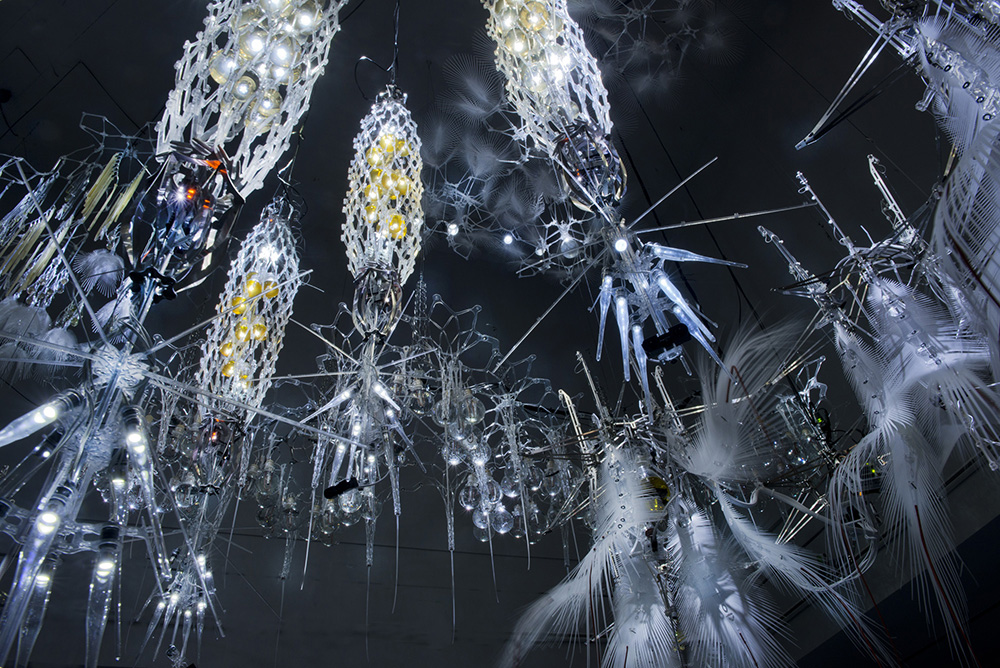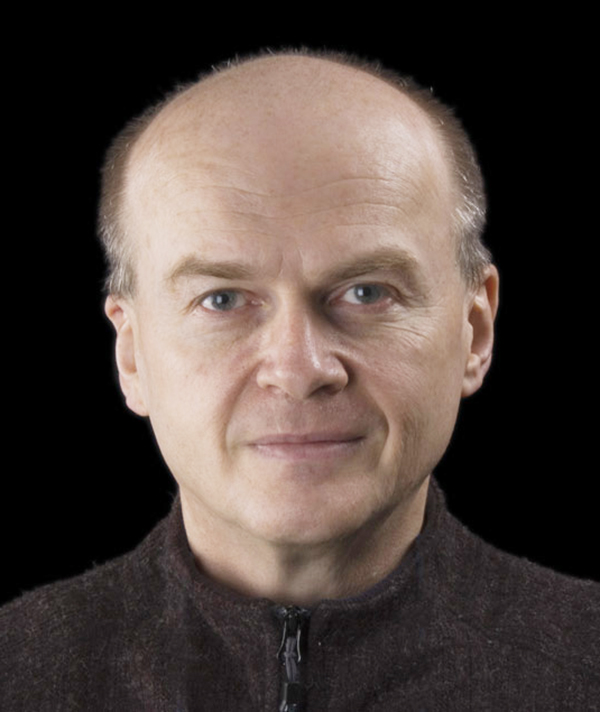
Philip Beesley's "Radiant Soil" forms interlinking clouds of industrial design biomimetic components of polymer, metal and glass, arranged in suspended filter layers containing a near-living carbon-capture metabolism.
The Edith O’Donnell Institute of Art History, in collaboration with the Nasher Sculpture Center, will present two talks from the Ad Astra Lecture Series starting Saturday.
Philip Beesley, professor of architecture at the University of Waterloo, will discuss recent work from the Living Architecture Systems Group that offers new models of immersive design.
Beesley’s presentation will suggest that the conception of buildings can move from more classical ideas of static designs toward designs that exhibit the expanded physiology and dynamic form of living bodies. The free lecture will be at 2 p.m. Saturday at the Nasher Sculpture Center, 2001 Flora St. in Dallas.

Philip Beesley
Beesley’s Toronto-based practice, PBAI, is an interdisciplinary design firm that blends public buildings with exhibition design, stage and lighting projects.
“For me when I think about making a building, I really want to focus on where we might be as a people, and what we might experience together and what we hope for,” Beesley said. “Even what we might become in the future. When I think about art, I want to think about what we can think and dream together — how significant that is, and how it matters, and also how we take responsibility for things. So for me those two terms come together and actually become indistinguishable.”
An expert on digital media art, Beesley received his bachelor’s in visual art from Queen’s University at Kingston (Canada) and another bachelor’s degree in architecture from the University of Toronto. At the University of Waterloo, he also serves as director for the Integrated Group of Visualization, Design and Manufacturing.
On Thursday, Sept. 24, the institute will host Meredith Tromble as part of the Ad Astra Lecture Series. Tromble is an artist and writer working at the intersection of art and science.
She will discuss her work on “Dream Vortex,” an interactive 3-D art installation, which she made in collaboration with researchers at the University of California, Davis.
Last spring, the lecture series hosted award-winning scientist Dr. Sean B. Carroll and Dr. Sophia Roosth, assistant professor in the history of science at Harvard University.